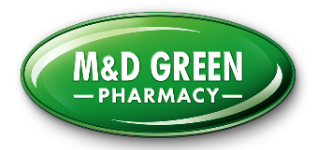FAMILY OWNED AND PROUDLY INDEPENDENT
Welcome to
M&D Green
Established in 1996, the M&D Green Group has 42 pharmacies throughout Scotland.

Prescription
Services
Our prescription services include repeat, NHS, private and online prescriptions.
Private
Services
We offer a range of blood tests to help you monitor your health quickly and conveniently. Our tests can screen for anaemia, thyroid issues, and vitamin deficiencies plus many more.
FAMILY OWNED AND PROUDLY INDEPENDENT
Welcome to
M & D Green
Established in 1996, the M & D Green Group has 42 pharmacies throughout Scotland.

Prescription
Services
Our prescription services include repeat, NHS, private and online prescriptions.
M & D Green
Prescriptions App
Our app gives you a central point to manage your health, so you can be sure your orders going directly to your GP and pharmacy.
PROVIDING SERVICES ACROSS CENTRAL SCOTLAND
We are ideally positioned to provide an extensive and personalised service to patients in central Scotland.

Patient Services
At M&D Green, we offer a comprehensive range of private and NHS pharmacy services designed to support your health and wellbeing. Whether you need expert advice, prescription dispensing, or specialist healthcare solutions, our dedicated team is here to help.
Our services cover a wide range of health needs, including men’s and women’s health, weight loss and management, blood testing, vaccinations and more.
With convenient access to both NHS and private treatments, M&D Green is committed to helping you stay on top of your health. Visit your local pharmacy or explore our services online to find out more.
Private Services
Weight Loss & Management
Our integrated weight management service focuses on improving patients' health and quality of life. It offers psychological support, behavioural interventions, increased physical activity, improved dietary habits and weight loss injections.
OUR APP
Order your NHS Prescriptions Via Our Convenient App
Our new app makes managing prescriptions even easier. Download it today from iTunes or Google Play, and follow the simple instructions to log in. From there, you can easily order prescriptions and browse all our services.






